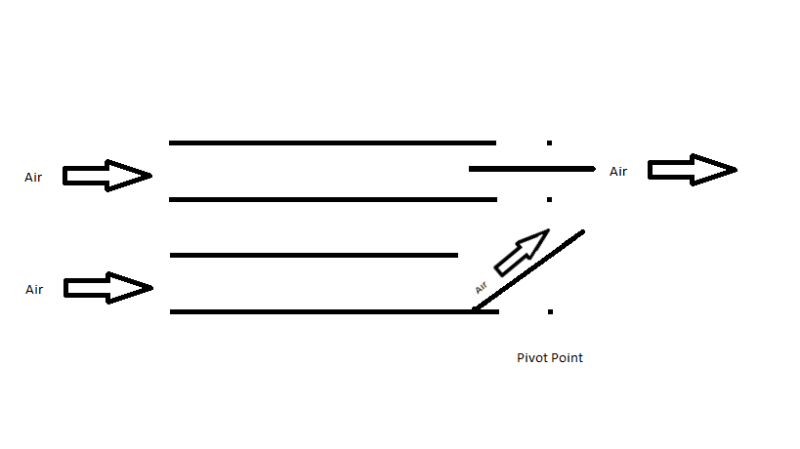The idea considered will impact aviation by the reduction in cost of construction, increased useful load and elimination of large moving structures, thereby allowing additional weight reduction or increased useful load. This will be accomplished by allowing the ram air caused by forward velocity to be vectored up or down by channels in the airframe creating a control thrust at the wing tips that can replace the ailerons. As both wings on a plane are normally in equilibrium it will take very little force exerted from the wing tip to raise or lower a wing.
The structure could be as simple as a square tube with a paddle normally in the neutral position allowing all air to flow directly through the structure. In the event the pilot would wish the aircraft to turn right the controls in the aircraft would be used in the identical manner as an aircraft today, only used to cause the right wing paddle to redirect air up and the left wing paddle to redirect air flow down with the resulting force causing the plane to turn to the right. In addition the horizontal stabilizer can be eliminated and replaced with a forward canard and a tail thruster used in a similar manner to cause the tail to be vectored up or down to maintain level flight or control assent or decent.
A typical aircraft has 110% lift on the main wing and negative 10% on the tail. By switching to the canard the same aircraft could carry an additional 20% useful load, or a reduction of stall speed or some combination of the two. In addition the cost and weight of construction would be reduced by the elimination of the structure to hold the ailerons, creating a cleaner lighter wing. In a stretch design the elimination of the vertical stabilizer could also be accomplished by a similar structure but in this case causing a horizontal thrust to allow coordinated turns, compensate for the P factor of the engine and again reducing weight and drag.
In this era of high fuel cost these impovements in performance will reduce aircraft, simplify design and reduce overall aircraft operational cost.
Like this entry?
-
About the Entrant
- Name:Tom Heathfield
- Type of entry:individual
- Software used for this entry:The Human Brain
- Patent status:none

